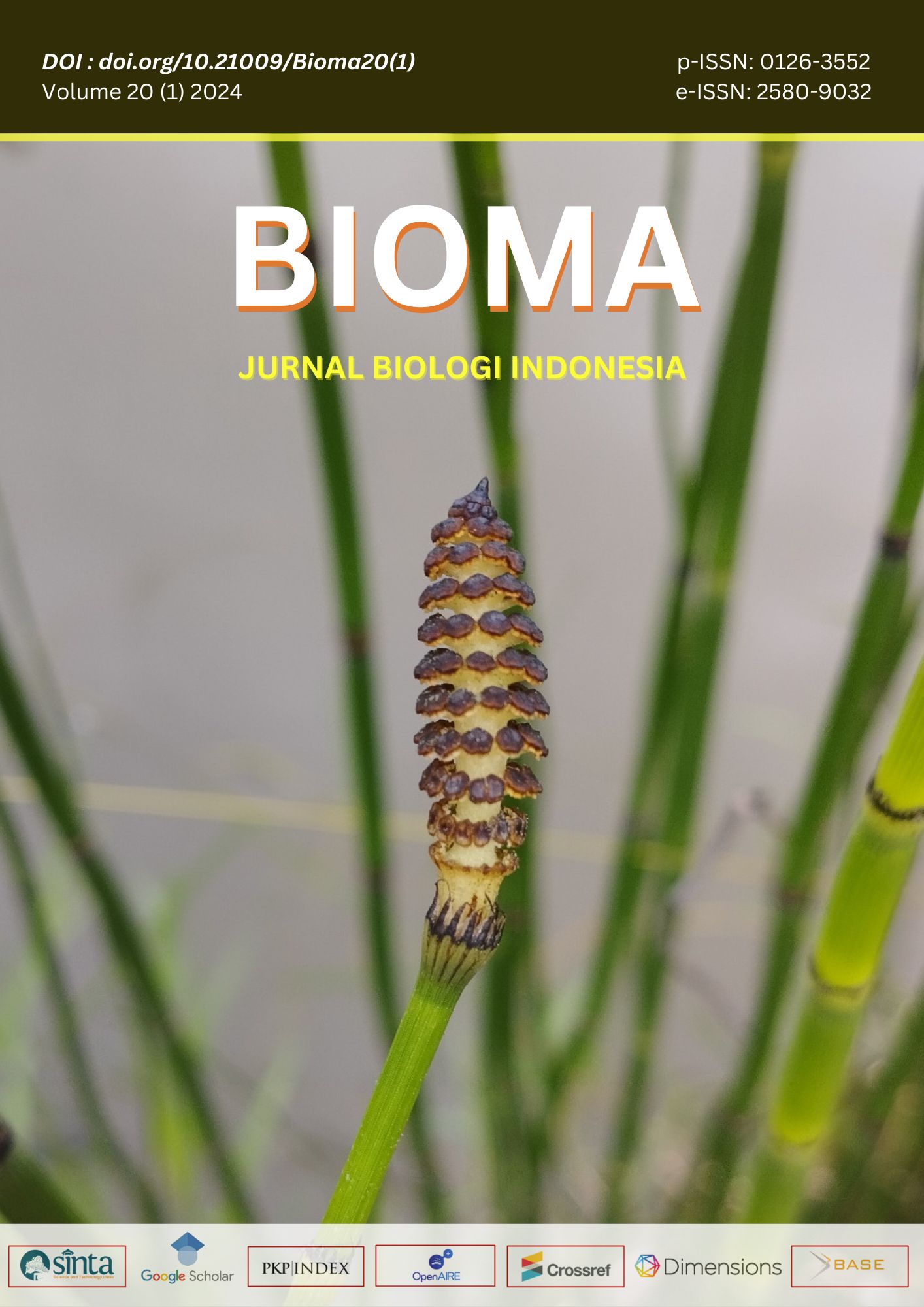The analysis of natural forage of blue smimming crab (Portunus pelagicus Linnaeus, 1758) on the east coast of Pangandaran, West Java
DOI:
https://doi.org/10.21009/Bioma20(1).2Abstract
Continuous use of blue swimming crab (Portunus pelagicus) without any control can cause population decline which leads to damage to the stability of the marine ecosystem, especially in East Coast Pangandaran, therefore cultivation is needed. In aquaculture, it is necessary to provide the right feed by knowing its natural diet. This study aimed to determine the natural diet of blue swimming crabs. The method used was descriptive analysis. The parameters observed were carapace width, gastric weight, the composition of natural diet. The relationship between the carapace width and gastric weight was analyzed by simple regression while the main type of natural diet was known by calculating the percentage of food composition. The relationship between carapace width and gastric weight was positive. Based on the composition found in crab gastric, there were 5 types of natural foods consisting of crustaceans (28.35%), meat (25.37%), mollusk (18.65%), fish (15.67%), and undefined material (UM) (4.47%). It is revealed that crabs are carnivores and scavengers, pose significant relationship between their size and gut content weight. It was also found that the composition of female crab feed was generally higher than that of males.
Downloads
Published
How to Cite
Issue
Section
License
Copyright (c) 2024 Bioma

This work is licensed under a Creative Commons Attribution-NonCommercial 4.0 International License.


